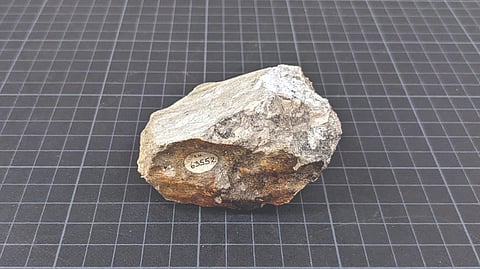Shards of the planet Mercury may be hiding on Earth
By JONATHAN O’CALLAGHAN
Mercury does not make sense. It is a bizarre hunk of rock with a composition that is unlike its neighboring rocky planets. “It’s way too dense,” said David Rothery, a planetary scientist at the Open University in England.
Most of the planet, the closest to the sun, is taken up by its core. It lacks a thick mantle like Earth has, and no one is quite sure why. One possibility is that the planet used to be much bigger — perhaps twice its current bulk or more. Billions of years ago, this fledgling proto-Mercury, or super Mercury, could have been hit by a large object, stripping away its outer layers and leaving the remnant we see behind.
While a nice idea, there has never been direct evidence for it. But some researchers think they have found something. In work presented at the Lunar and Planetary Science Conference in Houston in March, Camille Cartier, a planetary scientist at the University of Lorraine in France, and colleagues said pieces of this proto-Mercury may be hiding in museums and other meteorite collections. Studying them could unlock the planet’s mysteries.
“We don’t have any samples of Mercury” at the moment, said Dr. Cartier.
Gaining such specimens “would be a small revolution” in understanding the natural history of the solar system’s smallest planet. According to the Meteoritical Society, nearly 70,000 meteorites have been gathered around the world from places as remote as the Sahara and Antarctica, finding their way into museums and other collections.
Most are from asteroids ejected from the belt between Mars and Jupiter, while more than 500 come from the moon. More than 300 are from Mars. But scientists have stopped short of saying they are actually pieces of Mercury. Klaus Keil, a scientist at the University of Hawai’i
at Manoa who died in February, argued in 2010 that aubrites were more likely to have originated from other kinds of asteroids than something that was ejected from Mercury, with some scientists favouring a group of asteroids in the belt called E-type asteroids. Among his evidence were signs that aubrites had been blasted by the solar wind — something Mercury’s magnetic field should have protected against.
Dr. Cartier, however, has another idea. What if aubrites originally came from Mercury? Following from the hypothesis that a sizable object collided with a younger Mercury, Dr. Cartier said a large amount of material would have been thrown into space, about a third of the planet’s mass. A small amount of that debris would have been pushed by the solar wind into what is now the asteroid belt, forming the E-type asteroids.
There, the asteroids would have remained for billions of years, occasionally smashing together and being continually blasted by the solar wind, explaining the solar wind fingerprint seen in aubrites. But eventually, she suggested, some pieces were pushed toward Earth and fell to our planet as aubritic meteorites. Low levels of nickel and cobalt found in aubrites match what we would expect from the proto-Mercury, Dr. Cartier says, while data from NASA’s Messenger spacecraft that orbited Mercury from 2011 to 2015 supports similarities between Mercury’s composition and aubrites.
“I think aubrites are the shallowest portions of the mantle of a large proto-Mercury,” Dr. Cartier said. “This could resolve the origin of Mercury.” If true, it would mean that we have had pieces of Mercury — albeit a much more ancient version of the planet — hiding in drawers and display cases for more than 150 years.
Are you in Chennai? Then click here to get our newspaper at your doorstep!
Visit news.dtnext.in to explore our interactive epaper!
Download the DT Next app for more exciting features!
Click here for iOS
Click here for Android

